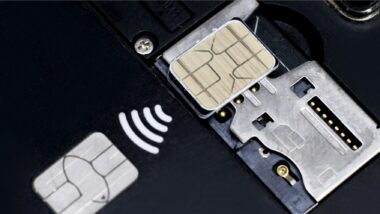
There’s probably something within you that hears the words Connectivity-as-a-Service and thinks it doesn’t make sense. Isn’t connectivity already a service? So, does, or can, this concept even make sense?
Well, yes, it does, and here’s why. A few weeks ago, I heard my 4-year old singing to herself, not knowing that I’m smiling at the sheer innocence of it all. And suddenly, my smile turns into an expression of amazement. What I heard from her was, “If you liked that song, click here to subscribe.” Click here to subscribe! She hadn’t realized that wasn’t part of the song! Welcome to Generation YouTube!
This simple example is a glaring demonstration of how our behaviors are changing, without us even realizing how intertwined we have become with the digital world. And for the Generation Z (we’re already past millennials!), the word “life” might as well be interchangeable with “digital life”.
One catalyst in shaping this behavior is the mobile industry. It has come a long way, in a relatively short span of time, with an incredible pace of innovation. Thinking back to just a few years ago, the most high-flying value-added service (VAS) that a network operator could offer its customers was a ringtone or a ringback tone! These services sound so trivial as to be considered a joke today. As mobile network operators (MNOs) diversify into many different businesses, VAS have, I believe, now transformed into business transformation services. MNOs now seek to solve bigger problems such as financial inclusion or industrial and enterprise automation. And these efforts contribute far more to the global economy than before.
According to the GSMA, mobile connectivity contributes about 3.8% of the world’s total GDP. That’s roughly $3 trillion worth of economic value. This industry has been a torch-bearer in subscription-based businesses. It’s no wonder mobile consumers are commonly called mobile “subscribers” in the industry.
Ironically, the acquisition journey of a new subscriber has always begun by selling a product—the SIM card. “Subscribe to this voice package.” “Subscribe to news alerts via SMS.” “Subscribe to a monthly data plan.” And all those subscriptions aligned to one IMSI (International Mobile Subscriber Identity), burnt inside a secure chip.
So, historically, connectivity has been sold not has a service, but as a product, requiring MNOs to set up strong logistic networks and complex supply chains—covering multiple SIM vendors, multiple type of SIM cards per offer, multiple types of packaging and packaging suppliers, multiple handset manufacturers etc.
Over the years, I’ve worked on projects that have helped MNOs optimize their subscription selling in many different ways. But what happens now with more connected devices being sold and connected to the Internet of Things? Devices of different shapes and sizes—ranging from cars to smartwatches—are being produced in tens of millions around the globe. Can connectivity still be sold as a product to address these billions of devices? The complexity is not sustainable.
This is where eSIM and subscription management comes in. This, is the “Click Here” of cellular subscriptions. It is a big leap in the direction of Connectivity-as-a-Service. Make no mistake, this model is not devoid of a physical component either. The security and standard requirements, rightfully, enforce the use of a secure element (the eSIM).
The beauty of eSIM lies in the architecture and model, where once deployed, customer- or subscriber-acquisition does not require very high acquisition costs.
The industrial and automotive world has adopted this technology for quite some time, so it has already reached a level of maturity.
Now, with advancements on the consumer electronics side, subscription management is about to go mainstream. Let’s welcome the world of Connectivity-as-a-Service.


